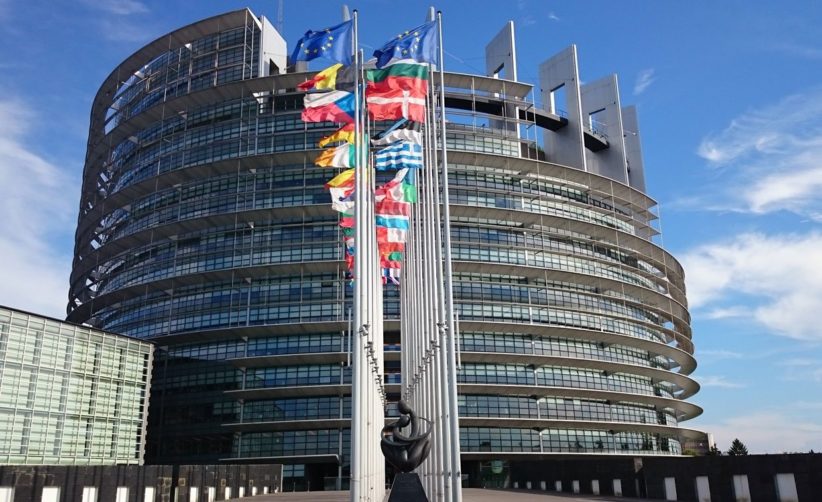The overall economy has been expanding slowly, but at least one sector is vibrant: nonprofits, which have been growing at a breakneck pace.
This thesis uses input-output modeling to measure the economic impact of non-profit sectors.The model is calibrated using data that describes the inter-industry relationships within each local economy, and then simulated using input-output analysis with social accounting matrix extensions.
Output multipliers are generated for the Arts, Education, Environment, Health, Human Services, and Other non-profit sectors using software, which calculates the ripple effects throughout each local economy.

If the global nonprofit sector were a country, it would have the sixteenth largest economy in the world.

There are still considerably more businesses than nonprofits, of course, about four times as many.But over that period, nonprofits also outpaced businesses in their percentage growth in hiring, wages and contribution to the gross domestic product, according to the Urban Institute.
The number of nonprofits in the United States grew 25 percent while the number of for-profit businesses rose by half of 1 percent, according to the most recent figures compiled by the Urban Institute.
All told, roughly 1.6 million nonprofits employed 10 percent of the domestic work force in 2010 and accounted for 5 percent of G.D.P. Nonprofits are all exempt from corporate taxes according to the Urban Institute.
Nonprofit Employment as a Percentage of Private Employment

In addition to the economic activity encouraged by nonprofits and the countless dollars that nonprofits save governments through their efficient service delivery, nonprofits are also one of the greatest sources of employment across the country.
According to the Bureau of Labor Statistics, the nonprofit sector employs 11.4 million people – that’s 10.2 percent of the American workforce!
Check out the map below to find out what percent of the workforce in your state is employed by a nonprofit. But over that period, nonprofits also outpaced businesses in their percentage growth in hiring, wages and contribution to the gross domestic product, according to the Urban Institute to the Bureau of Labor Statistics.
For Nonprofits, a Bigger Share of the Economy

All told, roughly 1.6 million nonprofits employed 10 percent of the domestic work force in 2010 and accounted for 5 percent of G.D.P. Nonprofits are all exempt from corporate taxes.But aside from that, they are an extremely varied group. Most are charities, for which donations are tax-deductible.
According to the Bureau of Labor Statistics, the nonprofit sector employs 11.4 million people – that’s 10.2 percent of the American workforce! What percent of the workforce in your state is employed by a nonprofit. But over that period, nonprofits also outpaced businesses in their percentage growth in hiring, wages and contribution to the gross domestic product, according to the Urban Institute.

Our economy is based on spending billions to persuade people that happiness is buying things, and then insisting that the only way to have a viable economy is to make things for people to buy so they’ll have jobs and get enough money to buy things. Philip Slater – Actor, Playwright, and Sociologist
Story highlights
- Large companies contribute disproportionately more to a country’s economic performance than smaller ones. Bigger corporations are more productive, they pay higher wages, enjoy higher profits, and are more successful in international markets.Therefore, a country’s economic performance can be linked to its number of big corporations.
- Analysts say large companies are more innovative, and the exporting firms are also found to be larger and do more research and development. This suggests that barriers to R&D and trade are the main culprits that slow down firm growth.Countries that face higher trade costs provide fewer opportunities for businesses to become large.
- To identify the barriers to firm growth, the authors behind the report say a model is needed to analyse different factors such as trade costs, innovation costs and tax distortions.

THE WORLD’S BIGGEST ECONOMIES IN 2017

By 2050, the World is likely to have changed drastically from what we know now, and the Planet’s economic and financial landscape will be no exception.

-
Six of the seven largest economies in the world are projected to be emerging economies in 2050
The emerging markets can be difficult places in which to do business.
The ability to understand and adapt to local rules and customs will be essential, as will the right entry strategy and, where appropriate, the right partners. Good relations with local government and regulatory bodies will also be crucial.
And, in some cases, the best production centres may not be the largest consumer markets.

-
Emerging economies need to enhance their institutions and their infrastructure significantly
The emerging markets can be difficult places in which to do business. The ability to understand and adapt to local rules and customs will be essential, as will the right entry strategy and, where appropriate, the right partners.
Good relations with local government and regulatory bodies will also be crucial. And, in some cases, the best production centres may not be the largest consumer markets.

-
Showing signs of recovery, the global economy is projected to double in size by 2032 and nearly double again by 2050.
The emerging markets can be difficult places in which to do business.
The ability to understand and adapt to local rules and customs will be essential, as will the right entry strategy and, where appropriate, the right partners.
Good relations with local government and regulatory bodies will also be crucial. And, in some cases, the best production centres may not be the largest consumer markets.





















